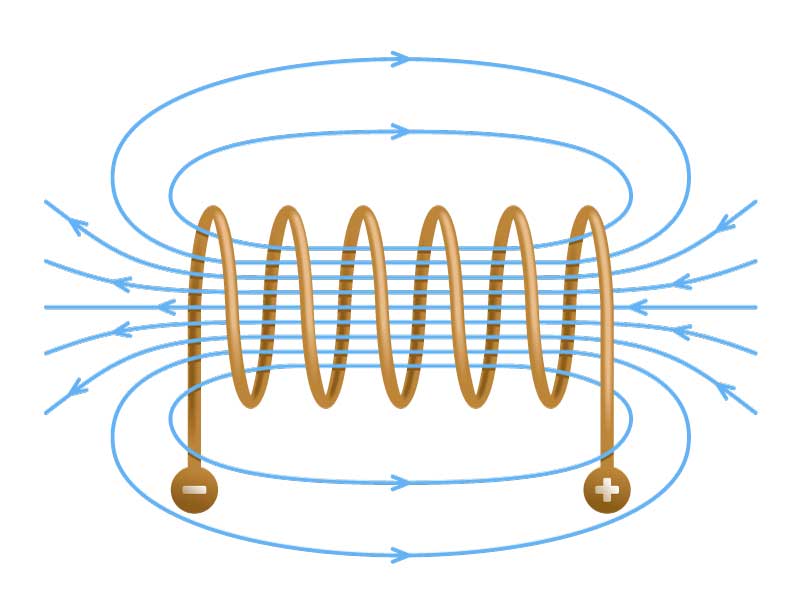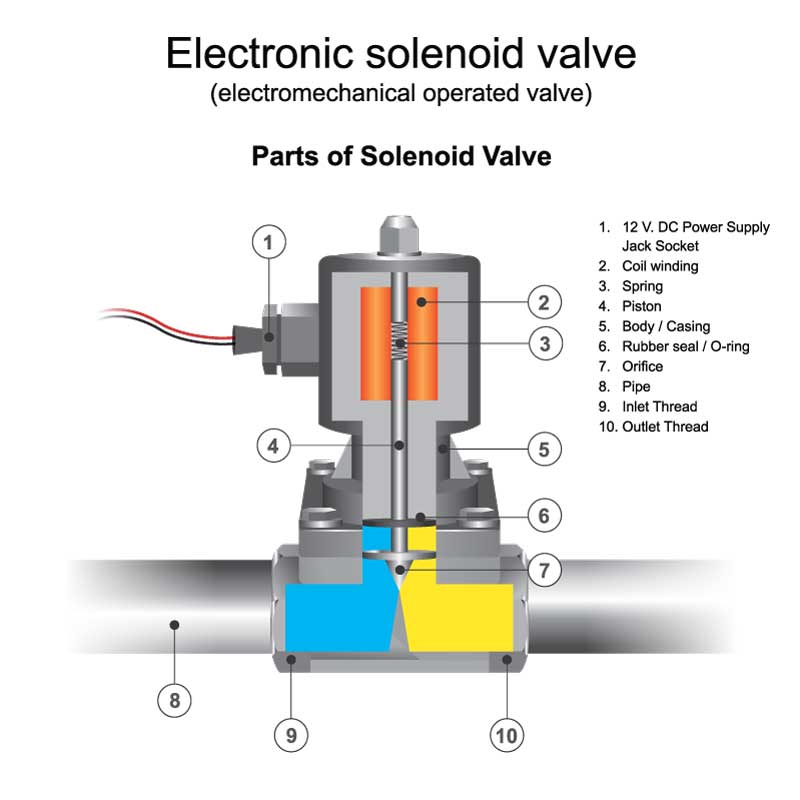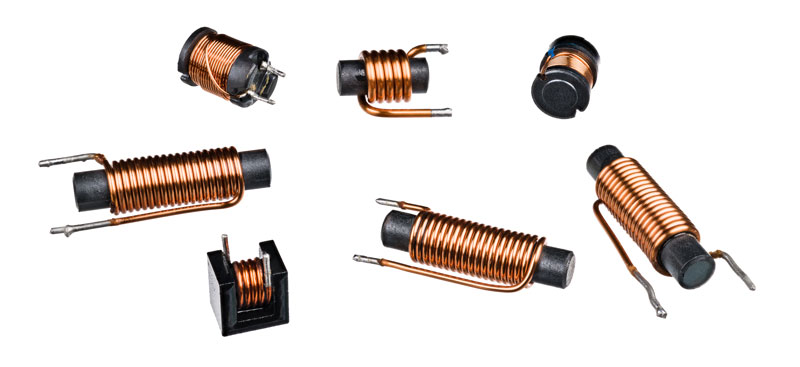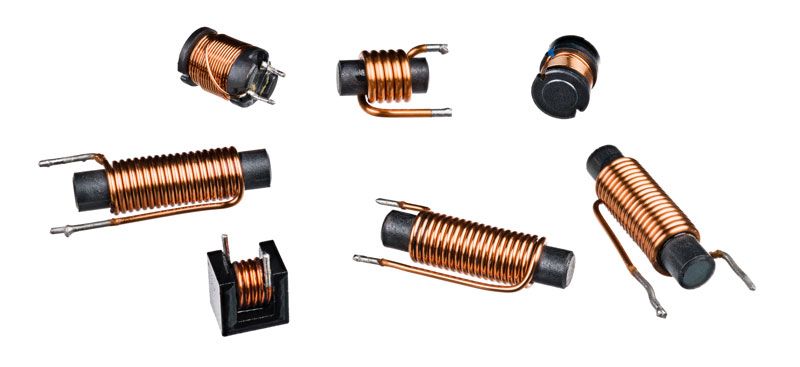This article will take an in-depth look at solenoids, their applications, and how they differ from electromagnets, the different types, and their applications.
But first, we’ll start with the basics - what is a solenoid?
Keep reading for our solenoid definition, including composition details.
What Does a Solenoid Do: Definition, Types & Applications
Solenoid gets its name from the Greek word “Solen” which means a channel or a pipe, and it was discovered and named in 1823 by André-Marie Ampère, a French physicist and mathematician.


A solenoid’s composition includes a long piece of wire wound into a coil and a moveable plunger (armature) within an iron or steel housing unit. The solenoid works on the principle of “electromagnetism” because when an electric current passes through the coil, it creates a magnetic field inside the coil. Basically, a solenoid converts electrical energy into mechanical work.
What is the Difference Between a Solenoid and an Electromagnet?
Although the solenoid and electromagnet are closely related, they are not precisely the same. A solenoid, or long coiled piece of wire, becomes a type of electromagnet when the purpose is to generate a controlled magnetic field.
However, if the solenoid application impedes changes in the electric current, it can be more specifically classified as an inductor rather than an electromagnet. In sum, a solenoid is an electromagnet - but an electromagnet is not always a solenoid.


What is a Solenoid Used For?
Solenoids are a simple and effective solution for controlling valves, electromagnetic switches, or mechanical interlocks. Solenoid applications are prevalent across numerous industries, including industrial, medical, aerospace, domestic, and automotive.
Solenoids are usually found in applications that require a feature for automatically turning something on or off. Their operation principle and instantaneous response make them a great solution for applications needing a large amount of power in a small space or quick, consistent, and robust operation. For example, many cars’ gearbox drive selector uses a solenoid, which prevents the selection of “drive” without first receiving a release signal from the brake pedal - so starting the car is only possible when parked.
Solenoids also have especially extensive industrial applications where electrical power is required to achieve a movement, such as locking, cutting, clamping, punching, positioning, diverting, holding, or rotating.


Types of Solenoid
There are five basic types of solenoids, and each type’s material, design, and function determine the application. Let’s take a closer look at each type and how they differ in material and design, including examples of applications.
AC- Laminated Solenoid
An AC Laminated Solenoid includes a coil of wire and a metal core constructed with a laminated metal to reduce the stray current, which helps improve the performance of the solenoid. AC solenoids are unique because they deliver a large amount of force in the first stroke, thanks to an inrush current, i.e., an instantaneous high input current drawn by a power supply or electrical equipment when turned on.
AC-Laminated Solenoids are characterized by emitting a clean buzzing sound when they are in operation. They are commonly used with equipment that requires immediate action, such as medical equipment, locks, vehicles, industrial equipment, printers, and household appliances.
DC- C Frame Solenoid
In the DC- C Frame solenoid, the “C” refers to the design of the solenoid frame, which covers the coil and is shaped like the letter C. Although this solenoid is DC configured, it can also be used in equipment design for AC power.
The DC- C Frame solenoid is used in multiple day-to-day applications thanks to its controlled stroke application. Some application examples include gaming machines, camera shutters, scanners, circuit breakers, coin counters, and bill changers.
DC- D Frame Solenoid
The DC- D Frame solenoid includes a two-piece frame covering the coils, forming a rectangular shape, and has a similar function to the C-frame solenoid. The DC- D Frame solenoid has a controlled stroke operation and can be used with DC or AC power.
DC- D Frame solenoids are commonly used with gaming machines, ATMs, and blood/gas analyzers.
Linear Solenoid
The Linear Solenoid is an electromagnetic device that converts electrical energy into a mechanical pushing or pulling force or motion. The linear solenoid’s coil winds around a cylindrical tube with a ferromagnetic actuator or "plunger" that moves or slides "IN" and "OUT" of the coil when electrified.
Linear solenoids are available in two basic configurations: a "Pull-type" that pulls the connected load towards itself when energized, and the "Push-type" that pushes away from itself when energized. The configuration is basically the same, except for the return spring's location and the plunger's design.
Linear solenoids are most common in starting devices, where the switching mechanism helps complete a circuit and allows the current to flow through the mechanism.
Rotary Solenoid
A rotary solenoid has the same elements as the others - a coil and a core. However, the operation is different. The metal core of the rotary solenoid is mounted to a disk with tiny grooves under it, which exactly match the grooves in the body of the solenoid, separated by ball bearings for easy motion.
The rotary solenoid is a unique type of solenoid used for various applications where there is a need for an easy automatic control process. Interestingly, they were originally designed for defense mechanisms; however, today, you can find them in many automated industrial mechanisms like lasers and shutters.
4 Applications of Solenoid


Solenoids of all types are used in countless applications, such as electromagnets, inductors, antennas, valves, etc., across various industries. Let’s take a look at some of the universal applications here:
Solenoid Locking Applications
These solenoid applications are commonly found in hotels, offices, vending machines, remote access systems, turnstiles, and car park access barriers. With these applications, the coil gets magnetized from an electric field, and the plunger moves to perform the lock and unlock mechanism.
Solenoid Automotive Applications
Solenoids are used in various applications across the automobile industry. We already discussed the solenoid’s function within a car’s gearbox drive selector, which prevents a car from starting when not in park.
Other automotive solenoid applications include gas cap locks, in-car entertainment release mechanisms, anti-vibration engine mountings, air conditioning control, and security system activation/deactivation.
Solenoid Medical Applications
Solenoids are widely used in medical applications that demand high accuracy in terms of force and stroke and stringent standards that ensure reliability and long life. Let’s take a dialysis machine, for example. Inside this machine, two solenoids work in tandem to control different levels of blood flow during the dialysis process by squeezing the plastic tubes carrying the blood at a pre-determined rate to meet precise clamping requirements.
Solenoid Railway Applications
The solenoid has countless applications throughout the railway industry. We mentioned turnstiles earlier in this article, which use linear solenoids to operate and control entry. Solenoids also support the functioning of locomotives, rolling stock, tracks, signals, and power distribution.
Another example is the safety interlocks on train passenger car doors, which use a solenoid-operated locking mechanism controlled remotely by the train manager.
Solenoid Industrial Applications
The list of solenoid industrial applications is lengthy because it basically includes any application where electrical power is required to achieve a movement, like locking, cutting, clamping, punching, positioning, diverting, holding, or rotating.
Are you shopping for solenoids and more for your next electrical project? Peerless Electronics, Inc. is an authorized stocking distributor for leading manufacturers and suppliers within the industrial, military, aerospace, transportation, and medical sectors.
Shop our extensive online inventory of industrial electronic supplies, including over 50 value-added services and custom-tailored technical support.




